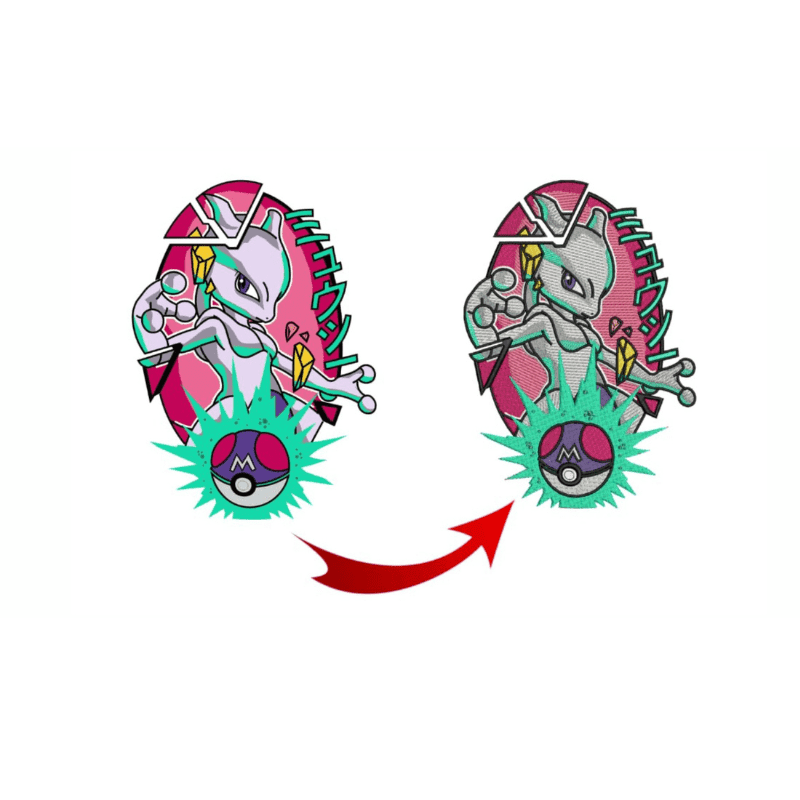Professional Digitizing for Embroidery: High-Quality Styles
Professional Digitizing for Embroidery: High-Quality Styles
Blog Article
Understanding the Needlework Digitizing Process: Your Ultimate Guide
Needlework digitizing is a careful craft that needs accuracy and know-how to convert complex designs into digital styles for machine embroidery. As craftsmens get started on this journey to understand the needlework digitizing process, a comprehensive understanding of the basics establishes the foundation for quality.

Comprehending Embroidery Digitizing Fundamentals
Embroidery digitizing essentials create the foundation upon which elaborate layouts are equated right into machine-readable formats for precise stitching. This initial action in the needlework digitizing procedure is crucial for ensuring that the final embroidered product is a devoted depiction of the initial layout. Comprehending embroidery digitizing basics entails comprehending crucial concepts such as stitch kinds, stitch instructions, thickness, padding, and pull payment.
Sew kinds play a vital role in identifying the aesthetic and textural outcome of the stitched style. By choosing the ideal stitch kind, whether it be satin, fill, or running stitch, digitizers can attain the desired effect and improve the overall high quality of the embroidery. In addition, stitch direction influences the circulation and measurement of the style, while thickness figures out the spacing and protection of the stitches.
In addition, underlay sewing provides stability to the style by safeguarding the fabric and stopping distortion during the needlework process. Pull payment is an additional crucial consideration to combat the natural tendency of material to agreement when stitched. Understanding these needlework digitizing basics is basic for producing professional-quality embroidered products.
Choosing the Right Digitizing Software Program
Choosing the ideal digitizing software is an important choice that considerably influences the effectiveness and quality of the needlework digitizing procedure. Digitizing for Embroidery. When picking the best digitizing software, it is vital to think about aspects such as the intricacy of styles you intend to produce, the user-friendliness of the software, the level of consumer support offered, and the compatibility with your embroidery device
There are numerous digitizing software program choices available in the market, varying from basic programs for newbies to innovative software for expert digitizers. Some prominent choices include Wilcom EmbroideryStudio, Hatch Embroidery Software Program, and PulseID. These software use a vast array of tools and attributes to help you develop intricate styles with ease.
Before making a choice, it is recommended to explore the various software application choices through cost-free trials or trials to figure i loved this out which one ideal matches your demands. Additionally, checking out evaluations and seeking recommendations from seasoned digitizers can supply valuable understandings right into the staminas and weak points of each software (Digitizing for Embroidery). By meticulously examining your needs and comparing the functions of various digitizing software, you can make an informed choice that enhances your embroidery digitizing operations
Digitizing Tools and Strategies

Optimizing Style Setup for Needlework
Mastering the complexities of style setups is essential in accomplishing optimal results in the embroidery digitizing procedure, building upon recommended you read the structure laid by recognizing digitizing devices and strategies. When optimizing design settings for embroidery, it is vital to think about factors such as stitch kind, density, underlay, pull compensation, and registration. Enrollment settings align various aspects of the layout precisely, preserving total layout integrity.

Troubleshooting Common Digitizing Issues
When experiencing typical digitizing concerns throughout the needlework procedure, it is vital to understand the origin and carry out reliable options promptly. One common problem is stitch thickness concerns, where stitches may be as well dense, causing the textile to tighten, or also sporadic, resulting in spaces in the design. Readjusting my site the stitch density setups in the digitizing software program can aid resolve this problem.
Another regular obstacle is thread breaks throughout the embroidery process. This can happen as a result of various factors such as wrong tension setups, plain needles, or using low-grade string. Guaranteeing proper maintenance of the needlework machine, including regular needle modifications and stress changes, can reduce the event of thread breaks.
Furthermore, layout registration errors can lead to misaligned aspects within the needlework layout. Examining the design alignment in the digitizing software program and making necessary modifications before stitching can help in preventing this concern. By resolving these typical digitizing issues quickly and successfully, you can ensure a smoother embroidery procedure and top notch completed items.
Verdict
Finally, mastering the embroidery digitizing procedure requires a strong understanding of the basics, the ideal option of software application, and knowledge of tools and strategies. Optimizing style settings and repairing usual digitizing issues are critical actions in guaranteeing high-quality embroidery outcomes. By adhering to these actions faithfully, one can achieve precision and effectiveness in the digitizing procedure.
Report this page